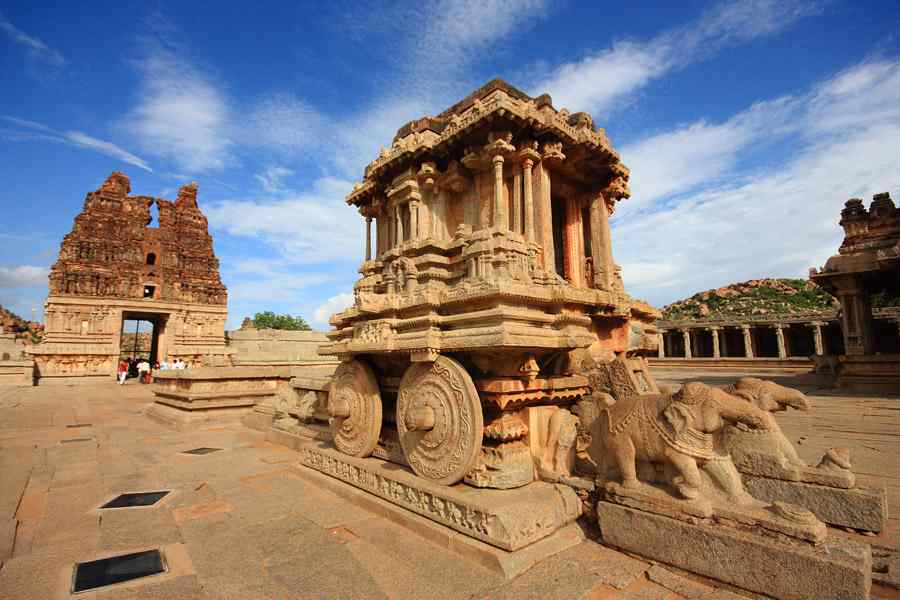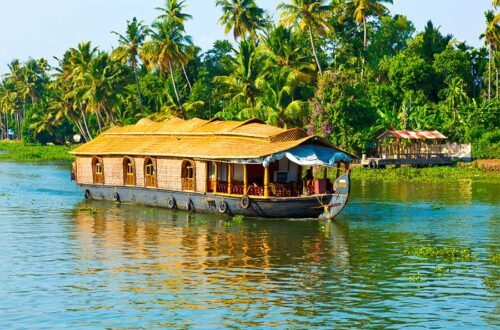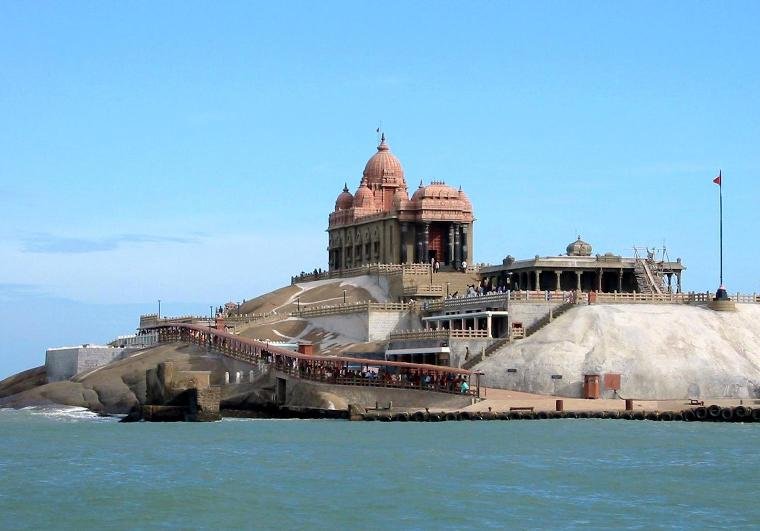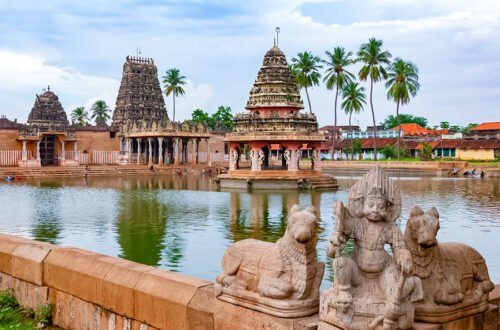South India is known for its ancient temples and centuries-old history. These temples have been built by the powerful rulers of the Cholas, Pallavas, Pandyas, and Chalukya dynasty. They are not only a sacred place of worship, but the main centers of culture and history.
With the tips and guidance of the best inbound tour operators in India, if you are hoping for a rich cultural and spiritual experience, you should definitely go ahead. The iconic temples of South India, lets you travel back to time and know about its unique story.
1. Brihadeeswarar Temple in Thanjavur, Tamil Nadu
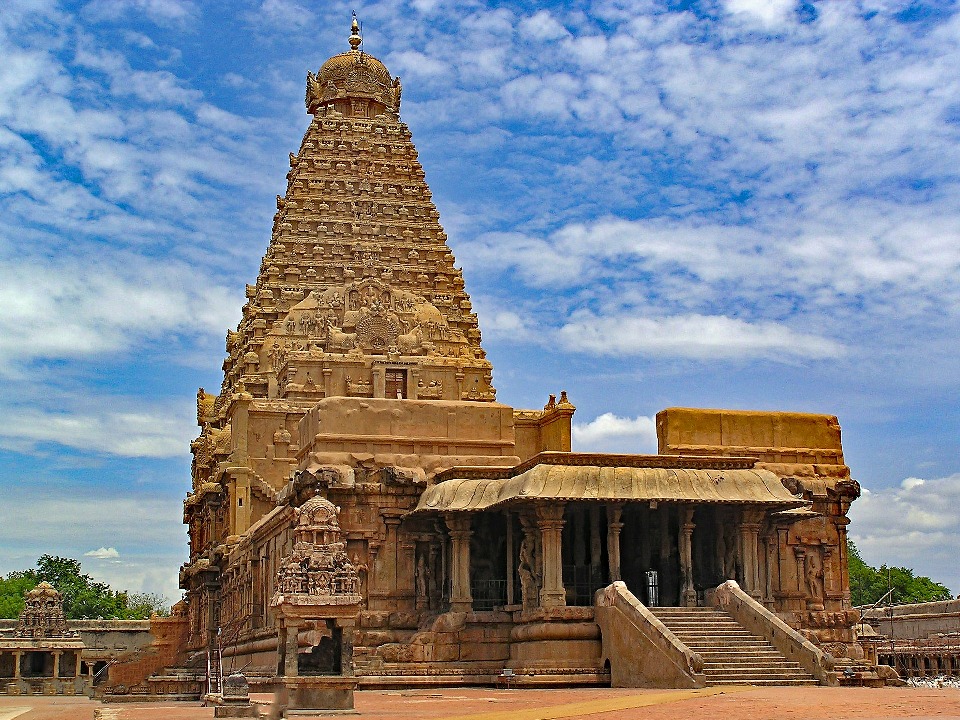
- Built by: Ruler of Chola dynasty, Raja Raja Chola I
- Era of construction: 11th century CE (completed in 1010 AD)
- Recognized as: UNESCO World Heritage Site
By planning your customized tour with the best Travel Agents in India, start your spiritual trip by visiting the Brihadeeswarar in Thanjavur, Tamil Nadu, also known as the Big Temple. This temple is dedicated to Lord Shiva and is built completely out of granite with towering vimana (tower of the temple) which is around 216 feet tall.
Highlights of the temple: It is made of 80-tonne monolithic granite, stunning frescoes, inscriptions, and intricate carvings.
2. Shore Temple in Mahabalipuram, Tamil Nadu
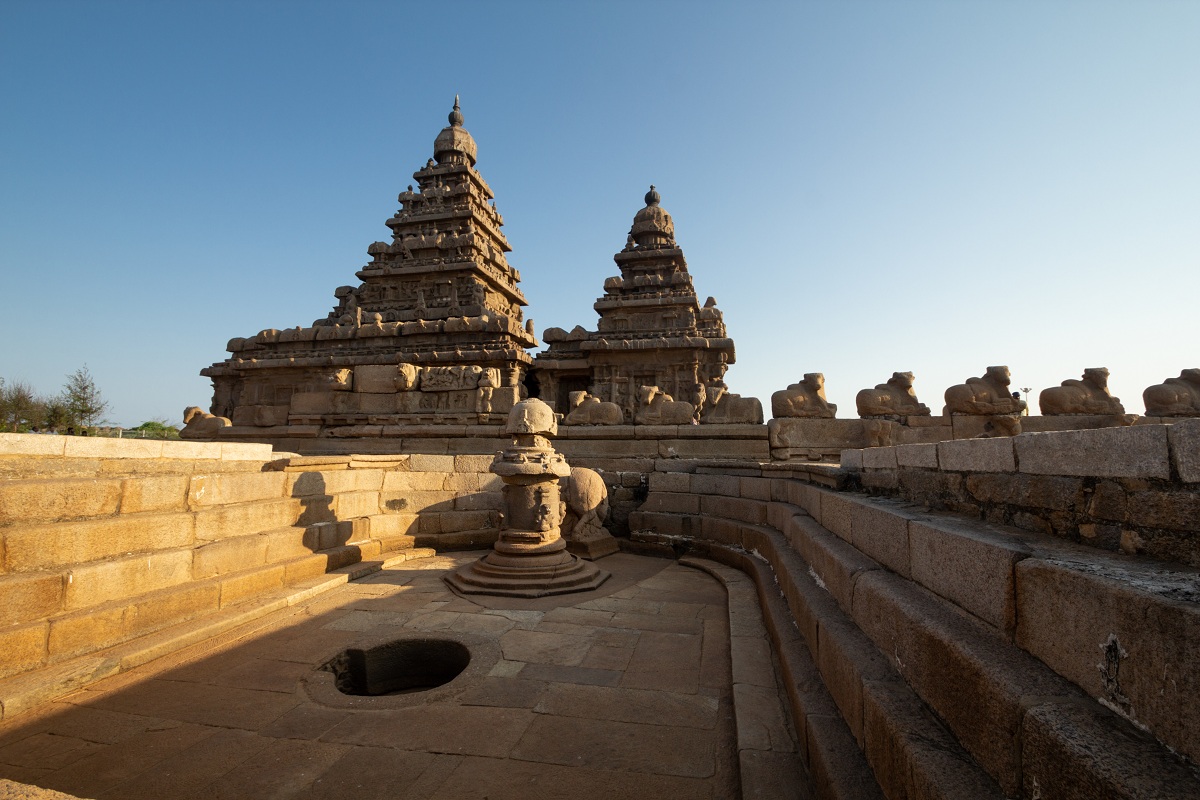
- Built by: Ruler of Pallava dynasty, Narasimhavarman II
- Era of construction: 8th century CE
- Recognized as: UNESCO World Heritage Site
One of the most ancient rock cut temples located at the shore of Bay of Bengal in Mahabalipuram, Tamil Nadu. This temple is dedicated to Lord Shiva and Lord Vishnu and is built of granite blocks with sculptures of deities and mythical animals
Highlights of this temple: It is made of gigantic granite blocks. A fascinating fact about this temple is that it served as a temple and a lighthouse for ancient seafarers. Even with the constant wind blowing and continuous weathering by the sea, it still remains intact, a testament to the power of the skilled craftsmanship of the Pallava dynasty.
3. Kailasanathar Temple in Kanchipuram, Tamil Nadu
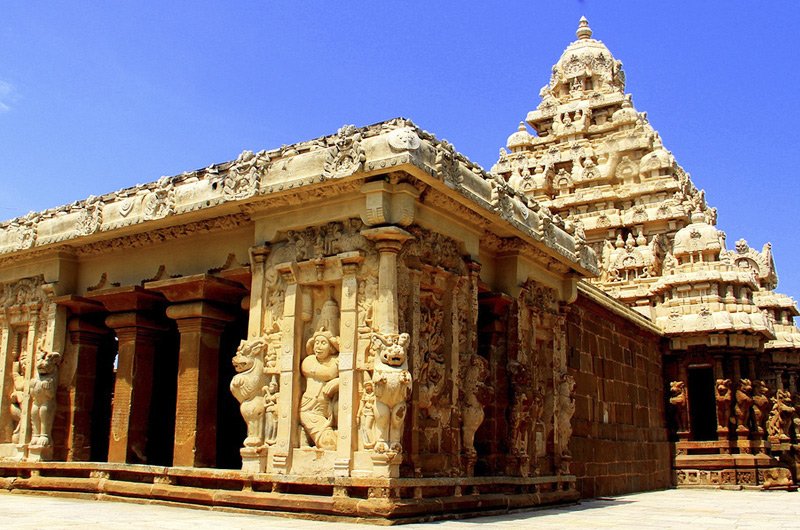
- Built by: Ruler of Pallava dynasty, Narasimhavarman II
- Era of construction: Late 7th century CE
The Kailasanathar Temple is one of the ancient temples of Kanchipuram (a divine city, considered as one of the sacred cities in Hindu mythology) in Tamil Nadu. The Kailasanathar Temple is dedicated to Lord Shiva and is built from sandstone.
Highlights of this temple: It is made of sandstone, built in Dravidian architectural style with detailed panels, frescoes, and intricate sculptures.
4. Virupaksha Temple in Hampi, Karnataka
- Built by: Initially built by Rulers of Chola dynasty; later expanded by the Vijayanagara kings
- Era of construction: Initially constructed during the 7th century
- Recognized as: UNESCO World Heritage Site
One of the must-visit temples in South India is the Virupaksha Temple, a part of the ruined city of Hampi, this mostly suggested by the best inbound tour operators in India for a glimpse of the rich history of the region.
The temple dates back to the 7th century, however, it gained its popularity during the rule of the Vijayanagara Empire. Hampi was once the flourishing capital of the Vijayanagara Empire.
Highlight of this temple: This ancient temple is dedicated to Lord Shiva, and till date it serves as functional pilgrimage site, where devotees can offer their prayers. The temple is known for its temple tower, murals, and sculptures that depict tales from the Ramayana and Mahabharata.
5. Meenakshi Amman Temple in Madurai, Tamil Nadu
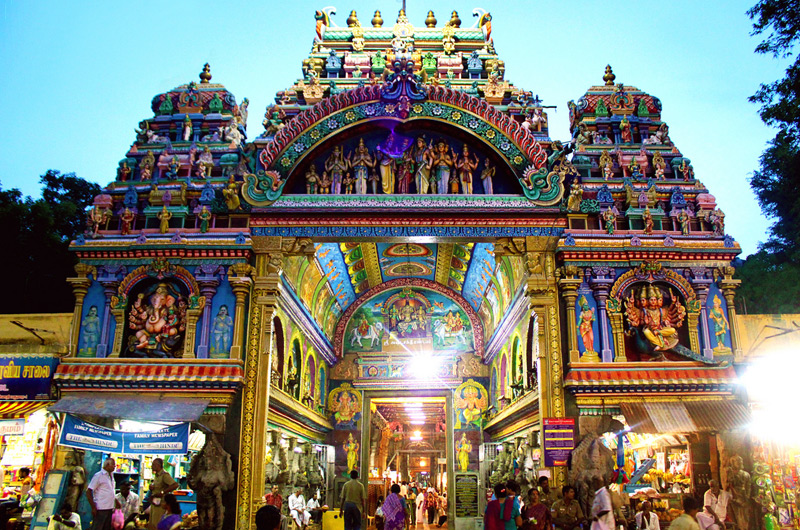
- Built by: The age of Shiva Lingam is not known, but the original temple was first built by a Ruler of Pandyan dynasty, King Kulasekara, after clearing the forest; later expanded by Nayakas in the 16th-17th centuries
- Era of construction: Initially believed to have been constructed 2500 years ago
Meenakshi Amman Temple in Madurai, Tamil Nadu is one of the sacred temples of South India which is dedicated to Goddess Meenakshi (a form of Parvati) and Lord Sundareswarar (Shiva). At the time of festivals like Meenakshi Thirukalyanam, thousands of devotees visit this temple to offer their prayers to the God and Goddess to seek blessings from them.
Highlight of this temple: The temple is known for its 14 stunning gopurams (temple towers) which are 170 feet tall. The intricate carvings of the sculptures and the towering gopurams are one of the most astonishing sites to witness.
6. Pattadakal Temples in Karnataka

- Built by: Ruler of Chalukya dynasty
- Era of construction: 7th-8th century CE
- Recognized as: UNESCO World Heritage Site
You will be stunned to know that Pattadakal is not a single temple, but is a group of temples. This temple is in fact a fusion of both Dravidian (South Indian) and Nagara (North Indian) architectural styles. In this temple the coronation of the Kings of Chalukya dynasty was conducted here.
The popular temples of Pattadakal include Virupaksha, Sangameshwara, and Mallikarjuna. Each of these temples are unique in their own ways, captivating everyone who visits.
Highlight of the Pattadakal temples: The temples are known for their astonishing architectural designs with intricately carved walls, ceilings, and sanctums, its themes are taken from the Ramayana and Mahabharata.
7. Lepakshi Temple in Andhra Pradesh
- Built by: Ruler of Vijayanagara Empire, King Achyuta Deva Raya
- Era of construction: Initially constructed in 16th century
- Recognized as: UNESCO World Heritage Site
The best Travel Agents in India know what to include in your spiritual and historical trip to South India. So next in the list they have included the Lepakshi Temple in Andhra Pradesh built by the ruler Vijayanagara Empire, King Achyuta Deva Raya.
Lepakshi Temple in Anantapur district in Andhra Pradesh was first constructed in the 16th century by the Vijayanagara governors Viranna and Virupanna. The temple is dedicated to Lord Shiva (known as Veerabhadra) in his fiercest form.
Highlights of this temple: The temple is known for their astounding architectural designs with amazing murals, hanging pillar (which doesn’t touch the ground), and the immense sculpture of Nandi. The designs on the ceilings are themes are taken from the Ramayana and Mahabharata.
8. Thillai Nataraja Temple in Chidambaram, Tamil Nadu
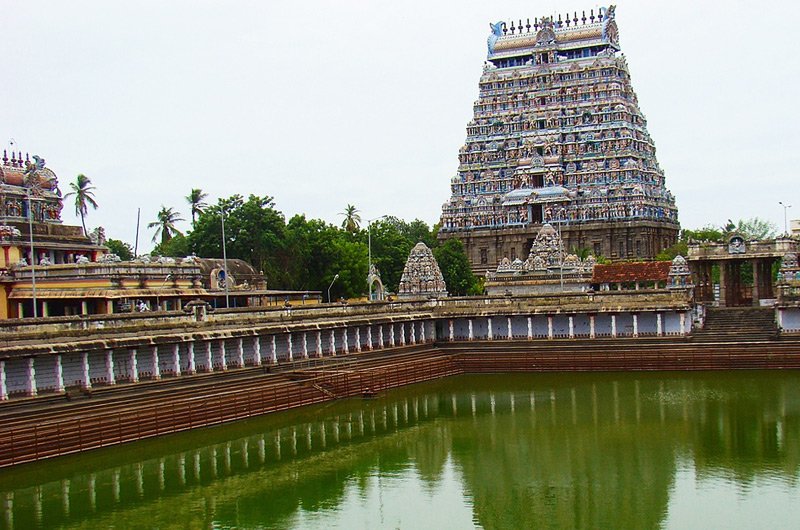
- Built by: Ruler of Chola dynasty, Rajendra Chola I
- Era of construction: 10th century; site dates back even further
The Thillai Nataraja Temple in Chidambaram, Tamil Nadu is dedicated to Lord Shiva in his cosmic dancing form, known as Nataraja. Thillai Nataraja Temple is in fact one of the five elemental temples (Pancha Bhoota Sthalams) that showcases Akasha (space).
Highlight of this temple: Its inner sanctum symbolizes formlessness of God (which is one of the secrets of this temple) and in the ancient times Bharatanatyam, the classical dance of Tamil Nadu is believed to have been performed here as a part of the rituals.
9. Padmanabhaswamy Temple in Thiruvananthapuram, Kerala
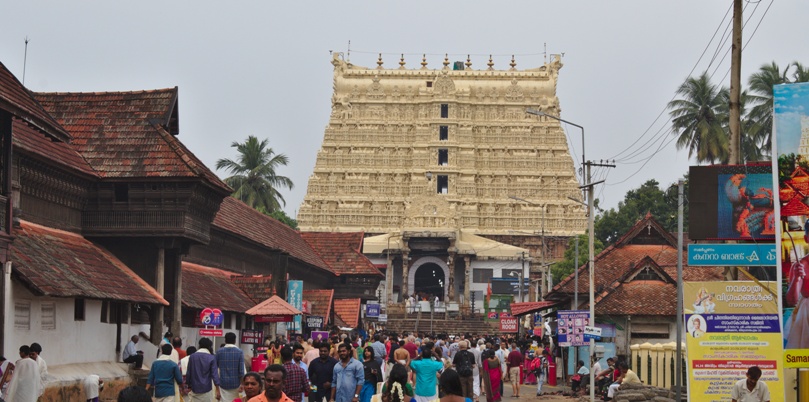
- Built by: The current temple structure was built by Ruler of Travancore dynasty, Maharaja Marthanda Varma
- Era of construction: The current temple structure was constructed in 18th century
The Padmanabhaswamy Temple in Thiruvananthapuram, Kerala is dedicated to Lord Vishnu in his eternal reclining form on the serpent Ananta (known as Anantha Shayana). The architectural design of the temple is a fusion of both Dravidian and Kerala architectural styles. This temple is originally believed to have been constructed in 6th century CE.
Highlight of this temple: This temple is renowned around the world for having secret vaults which were discovered beneath the sanctum. The treasures include gold idols, coins, and jewels, and till date most of the vaults remained unopened due to sacred reasons.
10. Sri Ranganathaswamy Temple in Srirangam, Tamil Nadu

- Built by: Ruler of Chola dynasty, Dharmavarma, later expanded by Killivalavan
- Era of construction: Initially constructed in 9th century
The Sri Ranganathaswamy Temple in Srirangam, Tamil Nadu is dedicated to Ranganatha, a reclining form of Lord Vishnu. This is temple is spread across 156 acres of land and is one of the largest pilgrimage sites.
Highlight of this temple: This temple is renowned for its 21 gopurams (temple towers). One of the tallest gopuram is Rajagopuram which is 73-meter tall. At the time of Vaikunta Ekadasi festival, millions of devotees visit to offer their prayers to the Lord.
Exploring temples of South India is one of the most immersive experiences, travelers will not only have a spiritual experience but they will be able to know about the history and culture of the region. The best inbound tour operators in India are waiting to make your travel plans to India hassle-free.
Planning your trip to India? Contact our travel expert for personalized itineraries and seamless travel experiences. Discover the beauty of India with Gov. approved India Tour operator send your enquiry :https://www.ercotravels.com/enquiry

